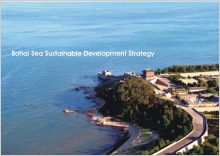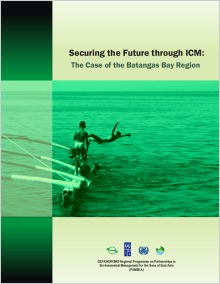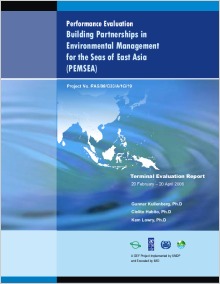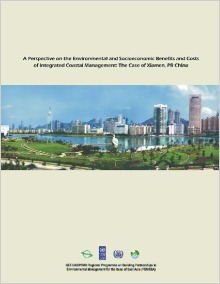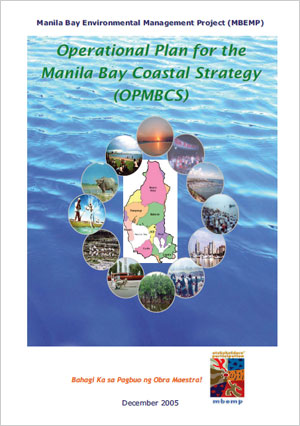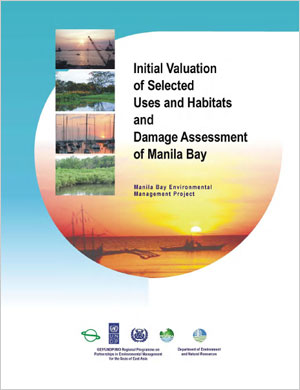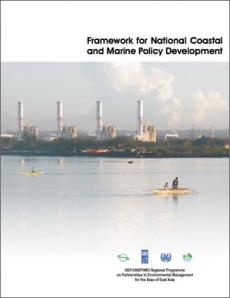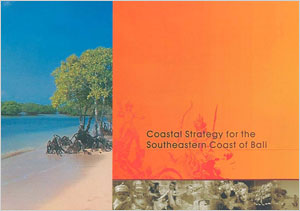
Breadcrumb
Bohai Sea Sustainable Development Strategy
The Bohai Sea Sustainable Development Strategy (BS-SDS) describes the socioeconomic conditions of the Bohai Sea region, its cultural and environmental background, its resources, the values of its environmental diversity and the threats facing these values. It is premised on the Bohai Sea Declaration adopted in 2000 by the surrounding three provinces and one municipality, and was developed through concerted consultation and consensus building among coastal provinces, municipalities, government agencies, concerned sectors and other stakeholders. It is the stakeholders' response to the Bohai Sea Declaration.
Sewerage Planning and Wastewater Treatment for Sabang, Puerto Galera
This report details the preliminary costing of the sewerage collection system and wastewater treatment facility for Sabang, Puerto Galera. The details presented in this report served as the basis for the pre-feasibility study and bidding documents to be prepared in the next phase of the project.
Securing the Future through ICM: The Case of the Batangas Bay Region
Recognizing the intractable problems and frustrations of sectoral solutions, the Provincial Government of Batangas sought the assistance of the United Nations Development Programme (UNDP) and lobbied for the selection of Batangas Bay as demonstration site of its integrated coastal management (ICM) program under the Global Environment Facility (GEF)/UNDP/International Maritime Organization (IMO) Regional Programme for the Prevention and Management of Marine Pollution in the East Asian Seas (MPP-EAS). The MPP-EAS framework was built upon innovative and effective schemes for marine pollution management, technical assistance in the most strategic marine sector of the region, and the provision of opportunities to attract other agencies and the private sector for funding and investment.
Performance Evaluation Building Partnerships in Environmental Management for the Seas of East Asia (PEMSEA), Terminal Evaluation Report 2006
An evaluation commissioned at the end of PEMSEA's sixth year of Phase 2, to assess its effectiveness in implementing the Programme, and to make a recommendation about its future. The report is divided into six sections. Section 1 describes the project concept and design. The primary analysis of PEMSEA’s effectiveness in addressing the ten programme objectives occurs in Section 2. Section 3 discusses project management. Sections 4, 5 and 6 focus on findings, recommendations and lessons learned.
A Perspective on the Environmental and Socioeconomic Benefits and Costs of Integrated Coastal Management: The Case of Xiamen, PR China
The Xiamen Demonstration Project was launched in 1993 under the Global Environment Facility (GEF)/United Nations Development Programme (UNDP)/International Maritime Organization (IMO) Regional Programme for the Prevention and Management of Marine Pollution in the East Asian Seas (MPP-EAS). When the Programme moved to its follow-on phase, the GEF/UNDP/IMO Regional Programme on Partnerships in Environmental Management for the Seas of East Asia (PEMSEA), the Demonstration Project was likewise continued. The municipal government, in response to emerging coastal and marine problems, adopted the ICM framework of PEMSEA. As an integrated approach, the framework allowed for the transformation of short term and usually untenable single-sector perspectives into more sustainable policies. This paper aims to do an ex-post analysis of the effects of the ICM program (first phase) in Xiamen (or in medias res analysis as ICM is still being undertaken), utilizing a set of indicators on: a. instrumental outcomes: coastal governance, investments in environmental infrastructure and resource protection; and b. management outcomes: reduction of externalities, sustained outputs and revenues from coastal and marine activities, and changes in attitude and perception.
Operational Plan for the Manila Bay Coastal Strategy (OPMBCS)
The development of the Operational Plan is a transformation of the identified strategies and action programs in the Manila Bay Coastal Strategy (MBCS) into action plans and programs with estimated budgets and timeframe. The Operational Plan entails the integration of practical lessons learned in the course of the implementation of the Manila Bay Environmental Management Project (MBEMP) with the adoption of relevant national and local strategies and programs.
Initial Valuation of Selected Uses and Habitats and Damage Assessment of Manila Bay
This report presents the results of the economic valuation of selected uses and habitats of Manila Bay, as well as the value of damages from different risk factors around the Bay. The study relied on a variety of valuation techniques and on secondary data to meet these objectives. It also relied on the results of the ground-truthing activities of the Site Management Offices (SMOs) and the Integrated Environmental Monitoring Program (IEMP) of the Manila Bay Environmental Management Program (MBEMP).
Framework for National Coastal and Marine Policy Development
The study presents national practices, experiences and the lessons learned in the policy development process and provides policy analysis and decision-making guidance for countries in the East Asian Seas region. The Framework outlines a general process, good practices and constraints that may show some light in the development of national coastal and marine policies.
Coastal Strategy for the Southeastern Coast of Bali
The Coastal Strategy for the Southeastern Coast of Bali describes the socioeconomic conditions, cultural setting and environmental aspects of Bali. It illustrates how the people value these assets, and what their perceived threats to these assets are. The strategy also presents a comprehensive environmental management framework with targeted outcomes and action programs involving the participation of stakeholders from government, nongovernment organizations, private sector and civil society groups.
